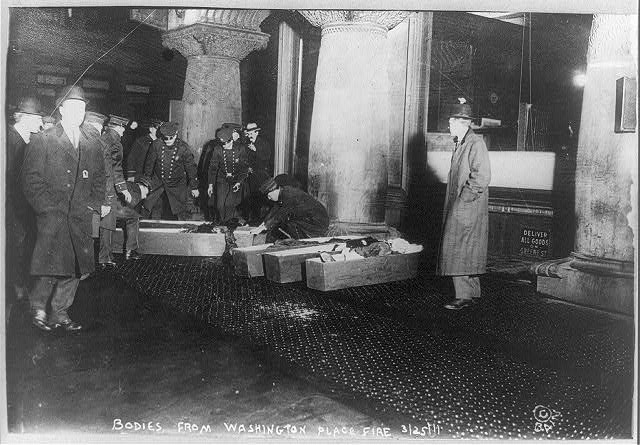In the late afternoon of Saturday, March 25th, 1911, a lovely spring day in New York City, the Triangle Shirtwaist (blouse) Factory, located in the ten story Asch Building in Greenwich Village, was nearing the end of its long work day. Triangle was notorious amongst garment workers for its crowded, unsafe factory floors, harsh working conditions, pitiful wages and hostility to the labor movement.
The owners had fired two hundred of its employees who had tried to join the International Ladies Garment Workers Union in 1909, and this had contributed to the discontent that sparked a massive strike by garment workers later to be known as the Uprising of the 20,000 in 1909. Female strikers were ridiculed as “streetwalkers” and thrown in jail with prostitutes and criminals. Others, such as strike leader Clara Lemlich, were brutally beaten on the streets by Tammany Hall connected thugs.
But on March 25th, 1911, most of its five hundred workers, mainly young Russian-Jewish and Italian immigrant women, were just looking forward to the end of their day, only a few minutes away. Shortly before five PM, someone on the eighth floor discarded a cigarette butt in a scrap bin full of fabric remnants.
The eighth floor was a virtual fuel storage tank: tissue paper patterns hanging from wires, piles of fabric, and wooden tables. The Asch Building itself, officially fire proof, was a death trap for workers with many of its doors locked from the outside (to prevent theft and unauthorized bathroom breaks), mounds of flammable scrap materials, inoperable fire hoses, and a rickety fire escaped that collapsed, sending workers hurtling to their deaths. As thousands of horrified spectators gathered outside the building, some forty-six workers, almost all teenage girls, leapt to their deaths as a hundred more were incinerated inside, many of them piled before the locked exit doors, all within a ghastly thirty minutes.
Outrage in the immigrant community and throughout the city led to demands for the reform of labor and fire safety laws. Both houses of the New York State legislature, however, were in the hands of Tammany Hall, the corrupt Democratic political machine that controlled the city and had stifled the efforts of reformers for years. These politicians feigned sympathy for workers but thrived on contributions and bribes from factory and business owners.
The public fury, however, was so great that in June of 1911 the state legislature created a Factory Investigating Commission. During two months in 1911, the commission sent teams of investigators into some two thousand factories. The investigations went beyond New York City and extended to the state’s nine biggest cities. By 1912 the commission had proposed fifteen new laws on fire and factory safety, the working hours and conditions of women and children, and eight of them were later signed into law. In the next three years, New York passed a record number of laws to protect workers all over the state. Many of these laws became the models for worker safety laws that would later be passed all around the country.
Amongst the throng of witnesses that day was Francis Perkins, who would later go onto to become the first Secretary of Labor and the first female Cabinet member in U.S. History. She would later remark, “The New Deal began on March 25th, 1911, the day the Triangle Factory burned.”
Sources
Richard Greenwald. The Triangle Fire, the Protocols of Peace, and Industrial Democracy in Progressive Era New York (Philadelphia: Temple University Press) 2005.
David Von Drehle. Triangle: The Fire That Changed America (New York: Atlantic Monthly Press) 2003.
Foner, Eric. Give Me Liberty: An American History, Vol. 2 (New York: W.W. Norton and Company) 2008.
